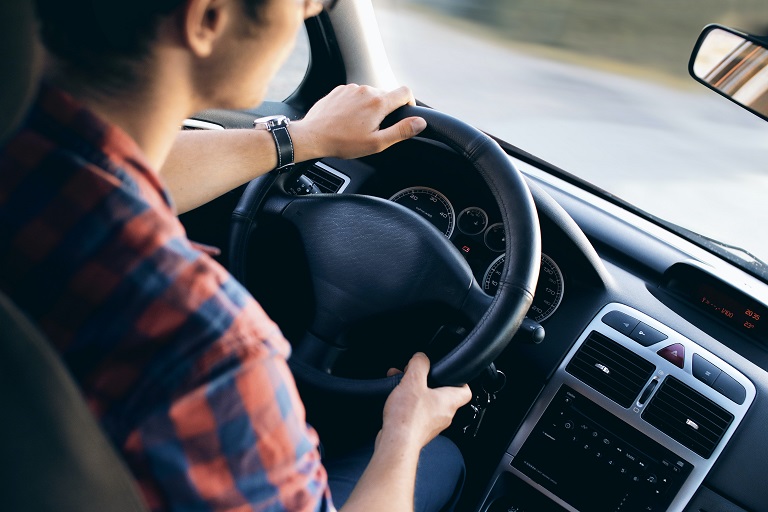
Parent’s Guide to Safe Driving for Teens
The freedom to drive at a young age can be exciting for your teen, yet as a parent, it could be a time that causes you feelings of stress or anxiety.
Statistics show that teen drivers in the U.S are more likely to be involved in a car accident when compared with any other age group; therefore, playing an active role in your teen’s driving experience will help prevent them from developing bad habits that could jeopardize their safety or the safety of others on the road.
Before you let your teen get behind the wheel, make sure they are covered by the correct auto insurance and make them aware of the following guidelines:
- Always wear a seatbelt
- Avoid distractions
- Obey rules and speed limits
- Don’t drive impaired
Always wear a seatbelt
Make sure your teen is aware that they must always wear their seatbelt while behind the wheel of a car.
Even if the vehicle is fitted with airbags, their deployment is not always guaranteed. Furthermore, protection from airbags isn’t sufficient for preventing serious injuries.
Wearing a seatbelt helps reduce the likelihood of the driver or any passengers in the vehicle sustaining severe injuries from a car accident and means your teen won’t be penalized by law enforcement for failing to do so.
Avoid distractions
Driving while distracted is one of the leading causes of motor accidents; therefore, remaining focused and keeping eyes on the road at all means your teen will have adequate time to adapt and react to everything that is happening on the public road.
If you allow your teen to drive with their cell phone, you can help them stay safe by using a hands-free system that will allow them to receive calls on the move without having to hold or be distracted by the device.
If you permit your teen to drive with some of their friends in the car, be aware that more passengers in the vehicle present more opportunities for your teen to become distracted. Create some ground rules specifying how many people they can take, ensuring they exhibit safe and responsible driving when carrying passengers.
Obey rules and speed limits
Get your teen off to the best start by putting them to the test with the laws and rules of the road. The more they learn about the different signs and what they mean, how to read road markings, and what the speed limits are, the less likely they are to drive irresponsibly or get caught up in an accident.
Source adequate learning materials for them to further their knowledge of the road, and make sure they read the specific driving rules and requirements for your state.
Don’t drive impaired
Driving while impaired can affect a person’s ability to focus or effectively control a motor vehicle, putting themselves and the safety of others at risk.
Driving impaired doesn’t solely refer to drink driving; it also includes feeling tired, nauseous, faint, unwell, or under the influence of pharmaceutical or recreational drugs.
Ensure your teen is aware of the importance of being wide awake, alert, and focused before and whilst driving a motor vehicle. If you have the means to do so, reassure them they can call you to be picked up if they don’t feel fit to drive.
Give your teen more confidence
If you have some knowledge of the car that your teen will be driving, you could explain the important things that they should check and adjust as good practice, such as:
- Checking and filling engine oil
- Changing a blown bulb
- Fitting the spare tire
- Adding washer fluid and coolant
- Checking and adjusting tire pressure
Knowing how to confidently complete these tasks on the vehicle will give your teen the skills that will prevent them from driving an unsafe vehicle, effectively lowering the chances of them losing control or getting into an accident because of part failure or breakdown.
Being a safer driver
A great way to improve your teen’s driving ability is to spend time driving in an array of weather conditions so that they can learn the adjustments a driver has to make to remain in control of the vehicle.
Braking distance, visibility level, and the level of grip in the tires are all affected in severe weather, which can put drivers at greater risk of losing control or being involved in an accident with another driver that has.
Driving in poor light or late at night can make inexperienced drivers feel sleepy and distracted, and the lack of light can demand more concentration than driving in well-lit conditions.
Go driving with your teen at various times of day, gradually working towards them driving in the dark so that they can acclimatize themselves to the changes in light and visibility spanning from morning to evening.
Support your teens’ journey with encouragement and praise, and you’ll be helping them get well on their way toward gaining their full license when they meet the requirements.
Enjoyed this Blog post? Check out our Blog list for more information on safe Teen Driving.

